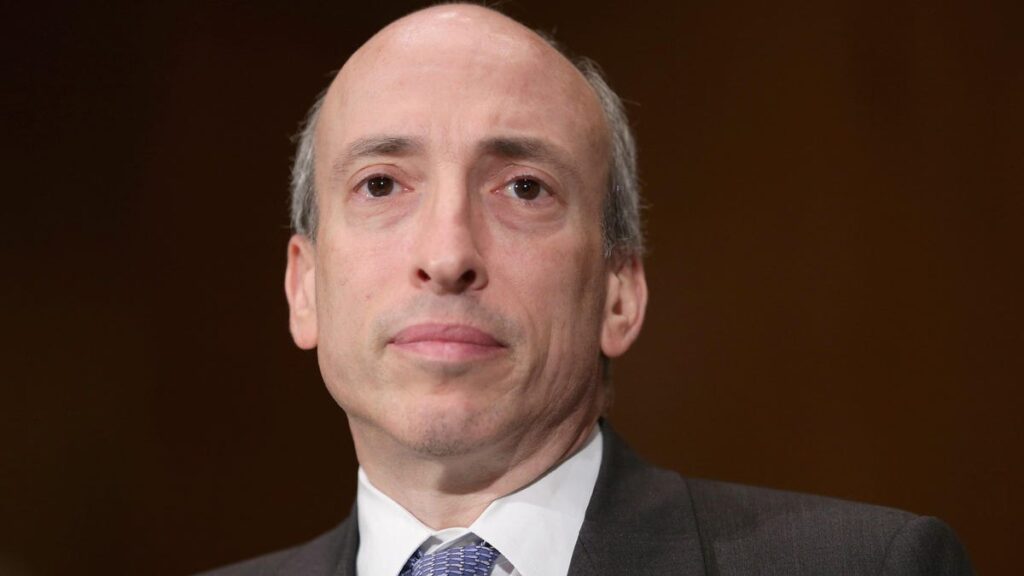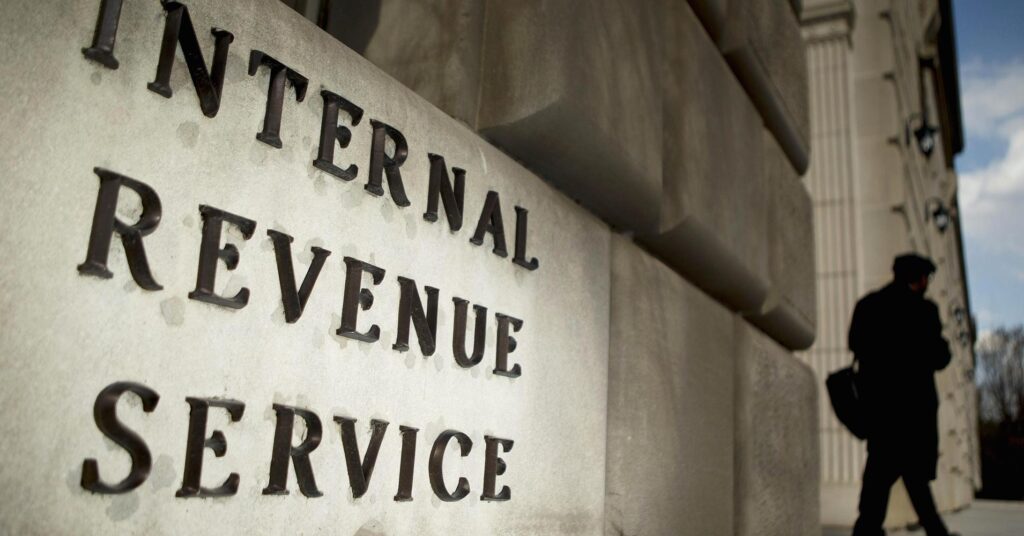As the market eagerly awaits this week’s release of the Consumer Price Index (CPI) data, Bitcoin has experienced a significant rally, with its price surging to $29,400. The CPI data, a key indicator of inflation, often influences investor sentiment and can impact the value of various assets, including cryptocurrencies like Bitcoin.
The recent rally comes after a period of relative stability for the world’s leading cryptocurrency, with its value oscillating around the $28,000 mark. The CPI data release has the potential to trigger further price movement for Bitcoin, as traders closely monitor inflation trends to gauge the overall health of the economy and adjust their investment strategies accordingly.
Historically, Bitcoin has been viewed by some investors as a hedge against inflation, with the cryptocurrency’s decentralized nature and limited supply making it an attractive alternative to traditional fiat currencies. As a result, an increase in inflation could potentially boost demand for Bitcoin and drive its price higher.
However, the relationship between inflation and Bitcoin’s price remains complex and subject to debate. Some analysts argue that the cryptocurrency’s volatility and unpredictable price movements make it an unreliable store of value during periods of economic uncertainty. Additionally, the increasing popularity of other cryptocurrencies and digital assets could dilute Bitcoin’s appeal as an inflation hedge.
Despite these uncertainties, the recent rally in Bitcoin’s price has generated significant interest among traders and investors. As the market braces for the release of this week’s CPI data, all eyes will be on the potential impact of inflation trends on the value of Bitcoin and other digital assets.
The coming days will reveal whether the Bitcoin rally can be sustained and whether the cryptocurrency can further solidify its position as a viable hedge against inflation. Regardless of the outcome, the interplay between economic indicators and digital asset prices remains a fascinating area of study for market observers and participants alike.
Bitcoin traders are gearing up for a substantial move in the market, as the leading cryptocurrency’s price has remained relatively stable around the $28,000 mark. The price stagnation has left traders speculating on the direction of the next significant shift, with the market poised for a breakout in either direction.
The recent price consolidation has created a sense of uncertainty in the market, with traders and investors closely monitoring Bitcoin’s performance for any signs of a potential breakout. Some analysts believe that this period of calm could be the precursor to a sudden price surge, while others suggest that a downward trend may be on the horizon.
Several factors have contributed to the current state of Bitcoin’s price, including global economic uncertainties, regulatory developments, and fluctuations in institutional interest. These factors have converged to create a unique market environment, with traders and investors waiting for a clear indication of where the market is headed next.
The upcoming price movement will likely be influenced by a variety of factors, such as the progression of regulatory frameworks worldwide, institutional adoption, and the overall sentiment in the market. Additionally, traders will be keeping a close eye on technical indicators to identify any signs of a potential breakout.
In the past, Bitcoin has experienced similar periods of stagnation, followed by significant price movements. The direction of these shifts has often been determined by a combination of market sentiment, fundamental factors, and technical analysis. As such, traders are eagerly anticipating the next major movement, which could potentially signal a new phase in the cryptocurrency’s price trajectory.
As the market waits for a decisive shift in Bitcoin’s price, it remains to be seen whether the next big move will be a bullish surge or a bearish decline. Regardless of the outcome, traders are preparing themselves for a potentially significant change in the market landscape.
U.S. Congressman Tom Emmer has taken aim at Securities and Exchange Commission (SEC) Chair Gary Gensler, calling him a “bad faith” regulator in a recent interview. Emmer expressed concerns that Gensler’s approach to cryptocurrency regulation could hinder the growth and innovation of the emerging industry.
According to Emmer, Gensler’s stance on digital assets is excessively rigid, which could potentially stifle the development of the crypto space. The Congressman argued that the SEC Chair’s regulatory approach should be more flexible and accommodating, allowing for innovation and growth within the industry while still ensuring adequate investor protection.
Emmer also raised concerns about the lack of regulatory clarity from the SEC, stating that the agency’s failure to provide clear guidelines for the crypto sector creates an environment of uncertainty. This, in turn, discourages businesses and investors from engaging in the space, fearing potential legal consequences.
The Congressman’s criticisms come amid ongoing discussions on the appropriate level of regulation for the rapidly evolving cryptocurrency industry. Proponents of a more lenient approach argue that excessive regulation could stifle innovation, while others maintain that strict oversight is necessary to protect investors and maintain market stability.
Despite his criticism of Gensler, Emmer remains a staunch supporter of the cryptocurrency industry. He has consistently advocated for a pro-innovation regulatory framework in the U.S., emphasizing the importance of embracing new technologies and fostering growth in the digital asset sector.
As the debate around cryptocurrency regulation continues, the industry will be closely monitoring the actions of regulators like Gensler and the SEC. It remains to be seen whether a more flexible and innovation-friendly approach will be adopted, or if a stricter regulatory environment will prevail in the coming months and years.
A recent study has exposed a concerning trend among cryptocurrency investors, as it found that a staggering 99.5% of them did not pay taxes on their digital asset gains in 2022. The study highlights the ongoing challenges faced by tax authorities and regulators in overseeing the rapidly growing crypto market.
The research, conducted by an independent organization, examined the tax compliance of cryptocurrency investors across various jurisdictions. It discovered that a vast majority of them failed to report their digital asset-related income and capital gains to the respective tax authorities, leading to significant revenue losses for governments worldwide.
The study attributes this lack of compliance to multiple factors, including the inherent anonymity of cryptocurrencies, which makes it challenging for tax authorities to track transactions and identify individuals involved. Additionally, the absence of a standardized global approach to cryptocurrency taxation, along with the complexity of tax regulations in some jurisdictions, has further contributed to the issue.
In response to the findings, governments and regulators are expected to intensify their efforts to close the existing loopholes and improve tax compliance in the crypto space. This could involve implementing stricter reporting requirements for exchanges and other crypto-related businesses, as well as adopting advanced technological solutions for monitoring digital asset transactions.
Some countries have already taken measures to address the tax evasion issue. For example, the United States Internal Revenue Service (IRS) has increased its efforts to ensure crypto investors comply with tax regulations by sending out warning letters and implementing more stringent reporting requirements.
The study’s revelations underscore the need for a coordinated global approach to tackle tax evasion in the rapidly expanding cryptocurrency market. As the industry continues to grow, it is crucial for governments and regulators to develop effective strategies to ensure that digital asset gains are accurately reported and taxed.
With a year-to-date increase of 70%, Bitcoin seems to have moved past the bear market phase, according to SkyBridge Capital founder Anthony Scaramucci. The former White House Communications Director is a prominent figure in the crypto space and has been closely monitoring the market. He expressed his thoughts in a recent interview, stating that the cryptocurrency has regained its upward momentum.
Scaramucci highlighted that institutional investors have been showing increased interest in Bitcoin, which he believes is a significant factor in the digital asset’s recent price surge. Large institutions have been allocating a portion of their portfolios to cryptocurrencies, viewing them as an essential hedge against inflation and fiat currency fluctuations.
Additionally, the SkyBridge Capital founder emphasized the role of regulatory clarity in Bitcoin’s growth, citing it as a key factor in driving its adoption. Despite some initial fears and uncertainties, regulators worldwide have been working to establish clear guidelines for the operation and use of cryptocurrencies. This increased clarity has provided investors with a sense of security, fueling Bitcoin’s rise.
Scaramucci also pointed out that Bitcoin’s network effect is growing, meaning that as more people adopt the digital asset, its value and utility increase. This network effect, coupled with growing institutional interest, has contributed to the cryptocurrency’s strong performance.
In the interview, Scaramucci advised investors to allocate a small percentage of their portfolio to Bitcoin, considering it a valuable long-term investment. He believes that the current upward trend will continue, and the bear market is now behind us.
As Bitcoin continues to gain traction among institutional investors and the general public, it appears that the digital asset is well on its way to solidifying its position in the global financial landscape. The recent price surge, increased adoption, and regulatory clarity all point to a bright future for Bitcoin and the broader crypto market.
The price of Bitcoin (BTC) experienced a swift recovery after rumors circulated that Binance CEO Changpeng Zhao, also known as CZ, had been arrested. Although the rumors remain unconfirmed, Bitcoin’s price took a nosedive before bouncing back and setting its sights on the $30,000 level.
Before the recovery, Bitcoin’s price plummeted to as low as $24,400, as panic spread among traders and investors. However, the cryptocurrency managed to regain lost ground and is now approaching the psychologically significant $30,000 mark.
Binance, the world’s largest cryptocurrency exchange by trading volume, has been under increased scrutiny from regulators across the globe. In recent months, the exchange faced regulatory pressure from countries such as the United States, the United Kingdom, and Japan. Despite these challenges, Binance has taken steps to comply with regulations and collaborate with authorities.
Some analysts believe that the arrest rumors of Binance’s CEO are a part of an ongoing campaign to discredit the exchange and sow doubt in the minds of investors. If the rumors prove to be baseless, they argue, the market should continue its upward trajectory.
Amid the uncertainty, traders and investors are keeping a close eye on Bitcoin’s price movement. The $30,000 level is considered a key support and resistance zone, and a decisive break above it could signal further gains for the cryptocurrency. Conversely, if the price fails to break through the $30,000 mark, it could face another round of selling pressure.
The broader cryptocurrency market also appears to be on the mend after the initial panic. Many altcoins have followed Bitcoin’s lead in recouping their losses and are now trading in the green. As the market continues to react to the unconfirmed rumors, the next few days will be crucial in determining the short-term fate of Bitcoin and other cryptocurrencies.
In summary, the recent rumors surrounding Binance CEO Changpeng Zhao’s alleged arrest have led to fluctuations in the cryptocurrency market. Bitcoin’s price has since rebounded, with traders now eyeing the $30,000 level as the next milestone. As the situation unfolds, the market’s response will be telling of the short-term prospects for cryptocurrencies.
In a recent interview with Cointelegraph, Ambre Soubiran, the CEO of Kaiko, a leading cryptocurrency market data provider, predicted a significant shift in the global center of gravity for the crypto industry due to the increasing regulatory pressure in the United States. Soubiran anticipates that Hong Kong will become the new epicenter for cryptocurrency innovation and growth.
The US has been tightening regulations on cryptocurrencies, with government agencies such as the Securities and Exchange Commission (SEC) and the Commodity Futures Trading Commission (CFTC) showing an increased interest in overseeing the burgeoning industry. As regulatory crackdowns intensify, the crypto industry is seeking friendlier jurisdictions to operate in, and Hong Kong appears to be a prime candidate.
Soubiran’s prediction comes on the heels of numerous developments in the crypto space, including high-profile legal actions against industry giants like BitMEX and Ripple. The SEC has accused the latter of conducting an unregistered securities offering, while the CFTC has charged the former with operating an unregistered trading platform.
These cases reflect the US government’s intention to establish a strong regulatory framework around cryptocurrencies, which, although essential for the market’s long-term stability, may be viewed as stifling innovation in the short term. Consequently, crypto businesses are on the lookout for more accommodating environments that allow for greater innovation without the threat of heavy-handed regulation.
Hong Kong has been increasingly positioning itself as a global financial center, embracing blockchain technology and fostering a regulatory climate conducive to the growth of the cryptocurrency industry. The Hong Kong Monetary Authority has been working on a Central Bank Digital Currency project, and the region’s Securities and Futures Commission has introduced a licensing regime for digital asset exchanges.
The combination of these factors has made Hong Kong an attractive destination for crypto businesses, and Soubiran believes that the region will continue to see an influx of blockchain and crypto projects as a result.
However, she also notes that the US’s stringent regulatory approach is not without merit, as it is crucial for the long-term stability and credibility of the cryptocurrency sector. While the industry is currently in a transitional phase, the end goal is to strike the right balance between innovation and consumer protection.
As regulatory landscapes continue to evolve, it remains to be seen how various jurisdictions will adapt to accommodate the rapidly growing cryptocurrency industry. For now, Hong Kong seems poised to seize the opportunity and emerge as a leading global crypto hub.
The United States government has announced plans to auction off 41,000 Bitcoin (BTC), worth approximately $1.8 billion, which were confiscated during the Silk Road investigation. Silk Road, an infamous online black market, operated as a platform for illegal activities, including drug trafficking and money laundering, between 2011 and 2013.
The U.S. Marshals Service (USMS), responsible for managing and disposing of assets seized by the government, has outlined the auction details. Interested parties must complete registration by April 30, 2023, and provide a refundable deposit of $200,000. The auction will take place on May 5, 2023, with the winning bidders being notified by May 10, 2023.
The seized BTC will be split into several lots, ranging from 100 to 5,000 BTC, allowing bidders to participate at various investment levels. Previous auctions conducted by the USMS have attracted a diverse range of participants, including cryptocurrency investment firms, traditional financial institutions, and individual investors.
The Silk Road case has had significant implications for the cryptocurrency industry. In 2015, the U.S. government auctioned off 50,000 BTC, then worth around $19 million, which were also linked to the Silk Road. Notably, entrepreneur Tim Draper won 30,000 BTC in that auction, which would now be worth over $1 billion. Similarly, in 2014, the USMS auctioned off nearly 30,000 BTC confiscated from Silk Road founder Ross Ulbricht, who is currently serving a double life sentence without parole.
While cryptocurrency has evolved considerably since the days of Silk Road, the upcoming auction serves as a reminder of the digital asset’s complicated past. The proceeds from the auction will be directed towards the U.S. government’s Asset Forfeiture Fund, which supports law enforcement activities and victim restitution.
Cryptocurrency king Bitcoin (BTC) nosedived to less than $27,000 following a United States Commodity Futures Trading Commission (CFTC) lawsuit against the world’s biggest crypto exchange.
Binance and company founder Changpeng Zhao face charges from the US agency, who cited allegations the crypto exchange had violated US law by offering unregistered derivatives.
Following the news, trading data revealed, BTC fell to fresh lows at roughly $26,525 USD. Numerous cryptocurrencies such as Ether (ETH) and BNB Chain fell to $1,703 and $310 USD the same period.
My Response to the CFTC Complaint | Binance Blog https://t.co/TadyotM7HN
— CZ 🔶 Binance (@cz_binance) March 27, 2023
Responding to the complaint, Changpeng Zhao said: “Upon an initial review, the complaint appears to contain an incomplete recitation of facts, and we do not agree with the characterization of many of the issues alleged in the complaint. While we will only be able to give full responses in due time, we will address a few key points below.”
Binance-US Regulator Row
The CFTC filed the lawsuit in the US District Court of Illinois. The lawsuit is the latest in a major crackdown from the US regulator. Cryptocurrencies such as Binance USD (BUSD), Tether (USDT), BTC, Ether (ETH), and others were designated as commodities in the lawsuit.
Authorities, including those at the US Securities and Exchange Commission (SEC), have targeted numerous exchanges, including KuCoin, Coinbase, CoinEx, and many others for allegedly selling unregistered securities.
In recent months, US Financial Crimes Enforcement Network (FinCEN) have also claimed that Binance also had ties to Russian darkweb financing, sparking strong condemnation from the crypto platform.
Additional crackdowns on the cryptocurrency exchange include an SEC lawsuit against Paxos, which supplied BUSD, causing Coinbase to suspend trading the latter.
Bitcoin has become a safe bet for many in the financial world amid a series of turbulent developments across the banking industry, reports have revealed,
A Reuters analysis has stated that, as global markets nosedive into a recession, numerous cryptocurrencies have recovered while stock trading indexes have dipped.
According to figures, Bitcoin reached 21 percent in March while the S&P 500 tumbled 1.4 percent. Gold has also gained roughly 8 percent amid the market chaos.
Stéphane Ouellette, CEO at digital asset investment platform FRNT Financial, said as quoted by Reuters:
“If you were going to describe an environment where there were successive bank runs because central banks are trying to fight inflation with fast rate increases, that is pretty close to as spot-on a thesis for owning bitcoin as you’ve ever heard.”
Ouellete concluded: “The bearish argument would be that these dynamics are temporary, and ultimately this rally is not going to sustain.”
Bitcoin vs Big Banks
This has allowed the digital asset to become a safe haven for investors despite ongoing banking and crypto trading platform collapses at FTX as well as Silvergate, Signature, and Silicon Valley Banks.
Additionally, Credit Suisse teetered on the verge of collapse last week, with banks losing billions in market value, triggering national regulators to crack down on the companies.
To date, Bitcoin holds roughly 43 percent of all cryptocurrency markets, with overall crypto market capitalisation spiking to 23 percent, or $1.1 billion, after 10 March.
Amid the Bitcoin rally, however, several key stablecoins have lost their dollar peg due to market instability. Circle USD (USDC) recently depegged from its 1:1 ration over exposure to now-defunct SVB’s US operations.
This forced its market capitalisation to plummet $36.8 billion USD on Friday last week. Conversely, Tether’s market cap rose to nearly $4 billion USD.










